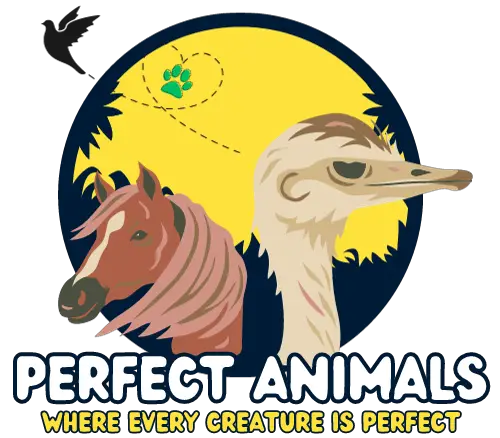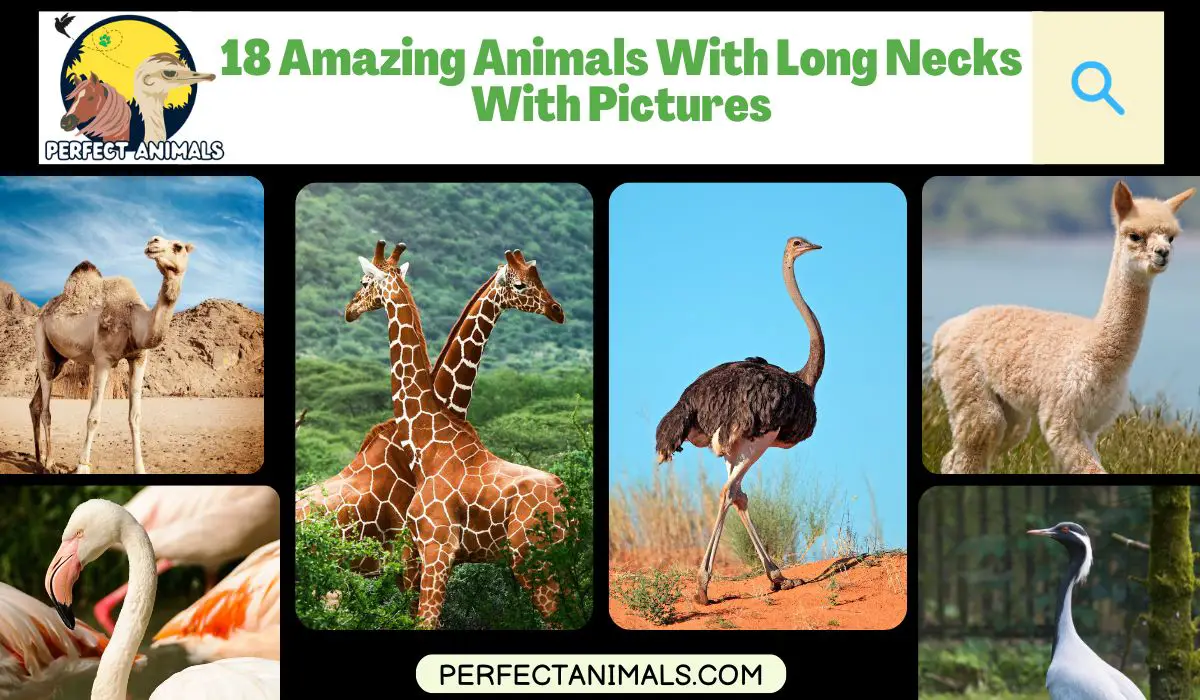Giraffes are famous for their incredibly long necks, but they are not the only animals endowed with elongated necks.
Nature has produced numerous animals with strikingly long necks adapted for specialized functions.
From surveying the landscape to plucking leaves from tall trees to stealthily ambushing prey, a long neck provides many advantages.
In this article, we will explore some of the most remarkable animals with long necks, how their necks help them thrive in their environments, and why these peculiar necks evolved in the first place.
Some of these lesser-known long-necked animals may surprise you.
So let’s look at some of the amazing diversity of animals with long necks around the world.
A List of Animals with Long Necks
Giraffe
The giraffe (Giraffa) is the tallest living land animal, instantly recognizable by its extremely long neck and legs.
A giraffe’s neck alone can measure over 6 feet (2 meters) long.
Their necks contain only 7 vertebrae like other mammals, but each individual neck vertebrae can be over 10 inches long.
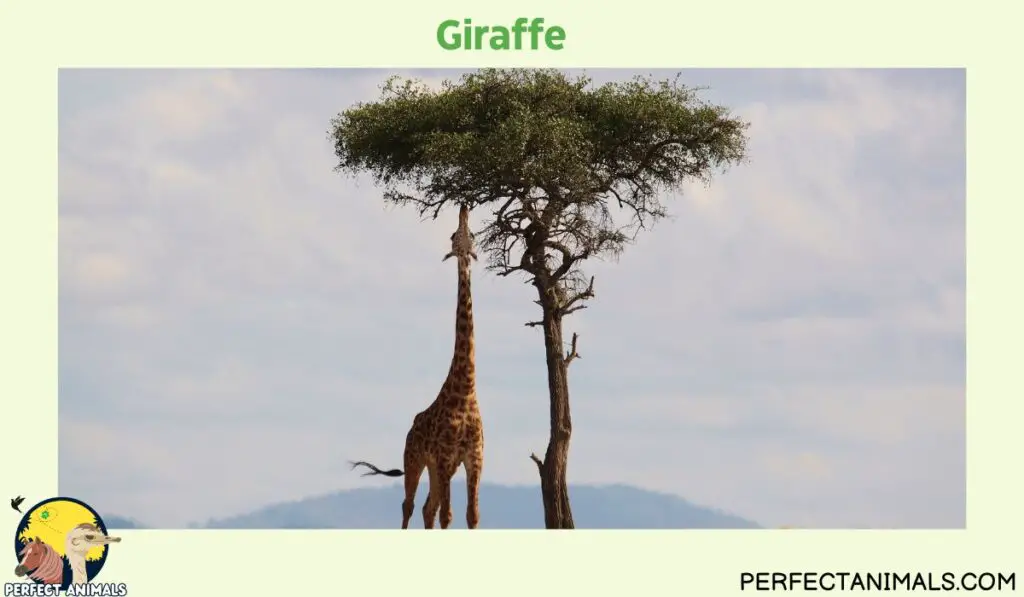
This incredible length enables giraffes to reach leaves and shoots at the tops of tall trees that other herbivores cannot access.
Their long necks are critical for their survival in the African savannas and woodlands where they live.
Giraffes also use their long necks for combat, with males swinging their necks and heads like medieval weapons to gain dominance.
The giraffe’s long neck comes at a cost, however, as pumping blood several feet straight up against gravity requires a powerful heart.
You May Also Like – 16 Hawaiian Lizards
Llama
Llamas (Lama glama) are domesticated South American camelids bred as pack animals.
Like their wild relatives the guanaco, llamas have slender necks that allow them to reach vegetation high up or far away from their body.
Their necks are adapted for browsing leaves off trees and shrubs not accessible to shorter-necked grazers.
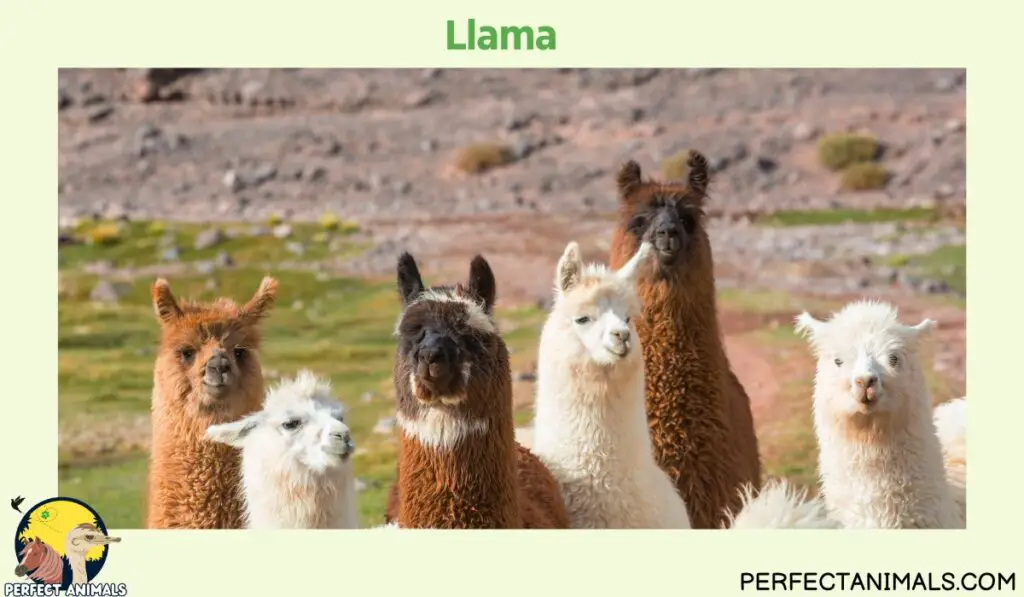
Llamas can rotate their long necks to reach food sources behind them while keeping their body still.
The length of a llama’s neck also enables effective temperature regulation, as dilated blood vessels in their long necks release heat.
Llamas are sure-footed in steep high-altitude environments thanks to their excellent long-necked balance.
Alpaca
The alpaca (Vicugna pacos) is a domesticated camelid like the llama, prized for its soft hair.
Alpacas have straight, slender necks and small heads suited for browsing leaves high up on bushes and trees of their mountain habitat in South America.
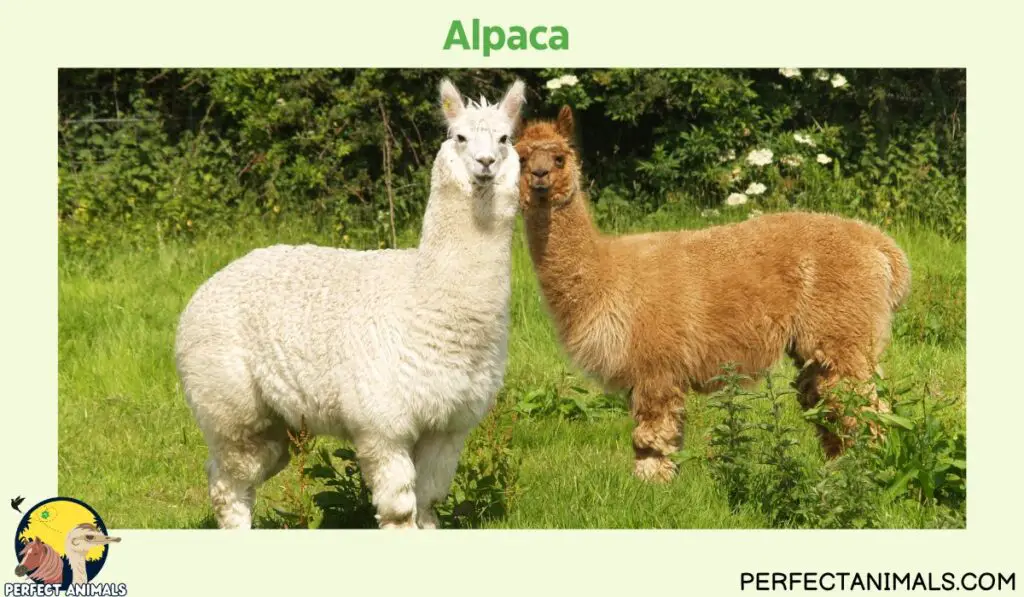
Their necks lack the muscularity and flexibility of a llama’s neck, but at around 2 feet long, provide sufficient reach for accessing nutrition.
The length of an alpaca’s neck aids thermoregulation just like the llama, allowing alpacas to thrive in the extremes of high Andean elevations.
Male alpacas use their elongated necks for neck wrestling competitions to establish dominance and breeding rights.
Dromedary Camel
The dromedary camel (Camelus dromedarius) is a large domesticated camel from the dry deserts of North Africa and the Middle East.
It has a long, curved neck that helps it reach high branches and clean water sources that other animals cannot access.

Their long necks also enable camels to see above scrub vegetation while kneeling, allowing early detection of predators or threats.
A camel’s neck lacks a hump and is slender but muscular, containing long collagen fibers that store water.
This adaptation prevents dehydration in the extreme heat.
Male camels swell their long necks and vocalize roars to attract females during breeding season.
Gerenuk
The gerenuk (Litocranius walleri) is an African antelope with remarkably long necks and legs specialized for browsing vegetation high out of reach of other animals.
Its thin neck can grow up to 2 feet long, aided by its seven elongated cervical vertebrae.
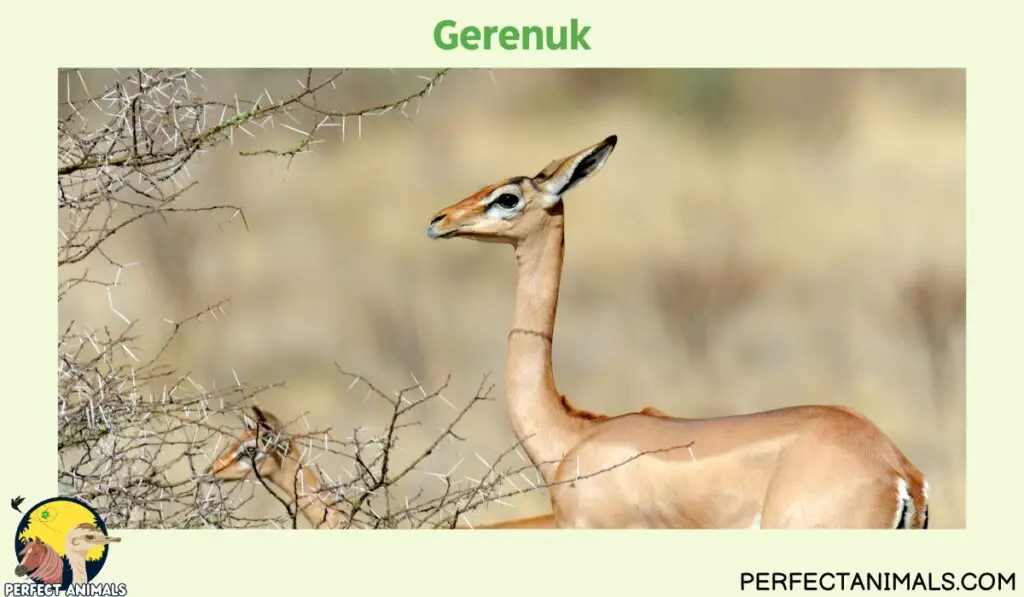
Gerenuks stand upright on their hind legs and elongated necks to reach high branches up to ~8 feet off the ground.
Their long necks and tooth structure are key adaptations for surviving in the arid Somali and East African environments where they live, enabling them to access nutritious forage.
The gerenuk’s long neck comes at a tradeoff, however, as it makes drinking water a challenge without kneeling.
Anhinga
Anhingas, often referred to as “water turkeys” or “snake birds,” are large waterbirds with distinctive long, S-shaped necks and dagger-like bills.
Measuring between 24.5-37.4 inches (62-95 cm) in length, these avian marvels weigh 46.7-47.6 oz (1325-1350 g) and boast a wingspan of 42.9 inches (109 cm).
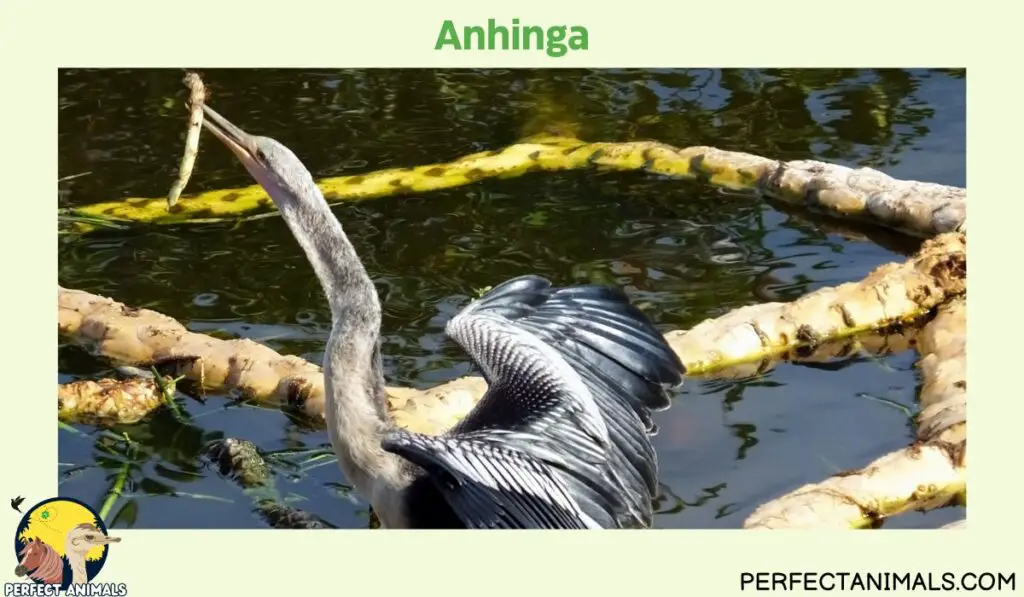
Found in diverse aquatic habitats like rivers, marshes, lakes, and mangrove swamps, Anhingas exhibit remarkable hunting skills.
Their long necks and sharp beaks aid in spearing fish underwater, showcasing the unique combination of elegance and adaptability that defines these avian wonders.
Anhingas’ ability to submerge their entire bodies allows them to navigate waterways with only their long necks protruding, creating a captivating spectacle of nature’s design.
Ostrich
The ostrich (Struthio camelus), native to Africa, stands out as the largest and heaviest living bird.
Males, reaching 6.9 to 9 feet in height and weighing between 220 to 287 pounds, sport a distinctive pale blue neck.
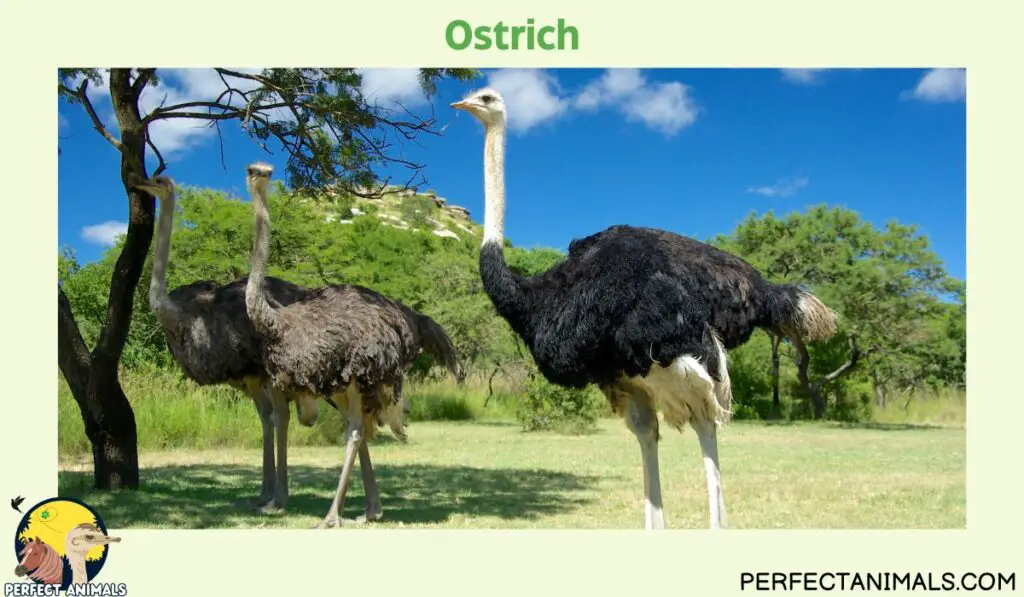
The myth of ostriches burying their heads in the sand arises from their ability to lower their necks parallel to the ground when resting.
These flightless birds, well-adapted to savannas and grasslands, exhibit a long and flexible neck with 19 vertebrae.
This adaptation provides them with a crucial vantage point, enabling them to survey the landscape for potential threats and predators.
The long neck of the ostrich serves as a testament to the evolutionary brilliance of adapting to diverse environments.
Greater Rhea
Greater rheas, indigenous to eastern South America, are known for their long necks and legs, reminiscent of ostriches and emus.
Standing 3-5 feet tall and weighing 33 to 66 pounds, these flightless birds navigate grasslands with exceptional speed, reaching up to 40 miles per hour.
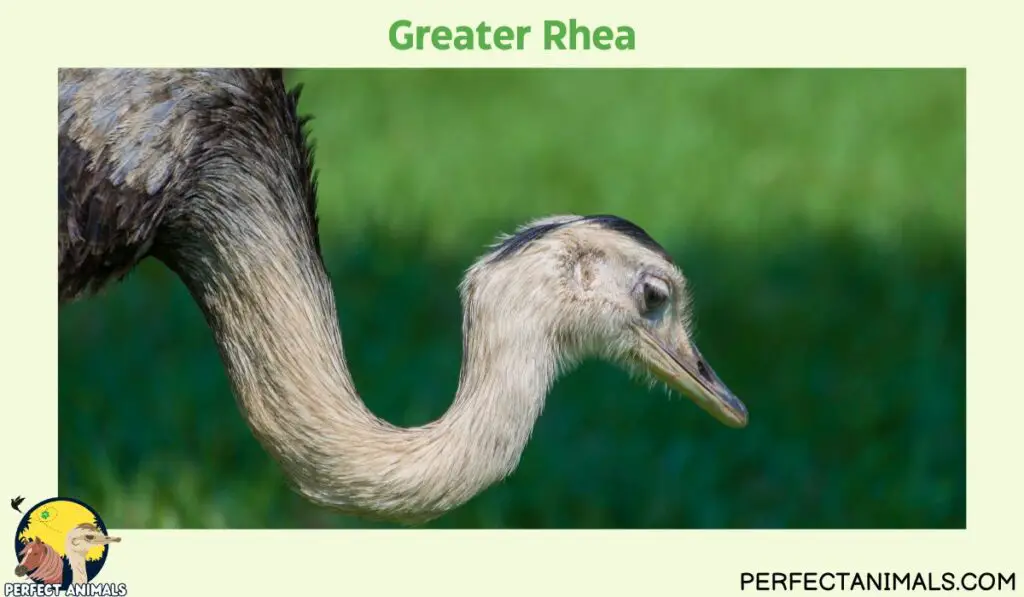
Despite their relatively short stature, greater rheas’ long necks contribute to their distinctive appearance.
This adaptation, coupled with their exceptional running abilities, showcases the evolutionary versatility that allows them to thrive in expansive open habitats.
The unique combination of long necks and swift legs sets the greater rhea apart in the avian world.
Black Swan
The black swan (Cygnus atratus) has an elegantly curved neck that is the longest relative to the body size of any swan species.
Their necks can measure over 60 cm (2 ft) long with 23 vertebrae.
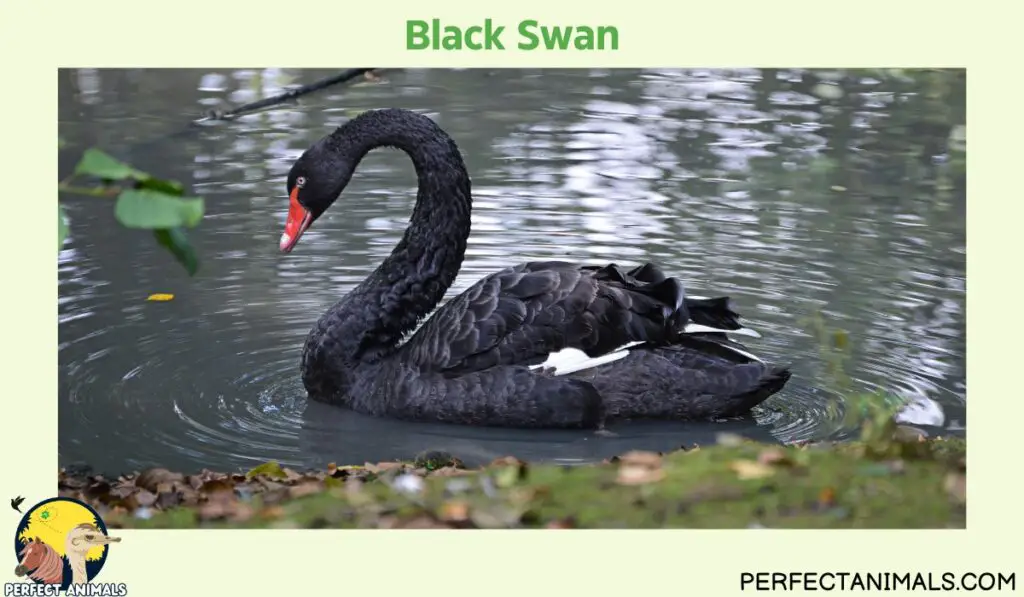
Black swans often hold their necks in an S-shape, and sometimes tuck their necks over their backs while swimming and resting.
The pronounced length of the black swan’s neck enables them to dive deeper than similar waterfowl to obtain aquatic vegetation.
Their long reach also allows them to dredge food from muddy bottoms.
Whooper Swan
The Whooper Swan (Cygnus cygnus) stands out among its counterparts with its relatively longer and thinner neck.
These large swans inhabit diverse regions from Iceland and Ireland to China, Korea, and Japan. Their long, straight necks, held erect most of the time, contribute to their elegant demeanor.
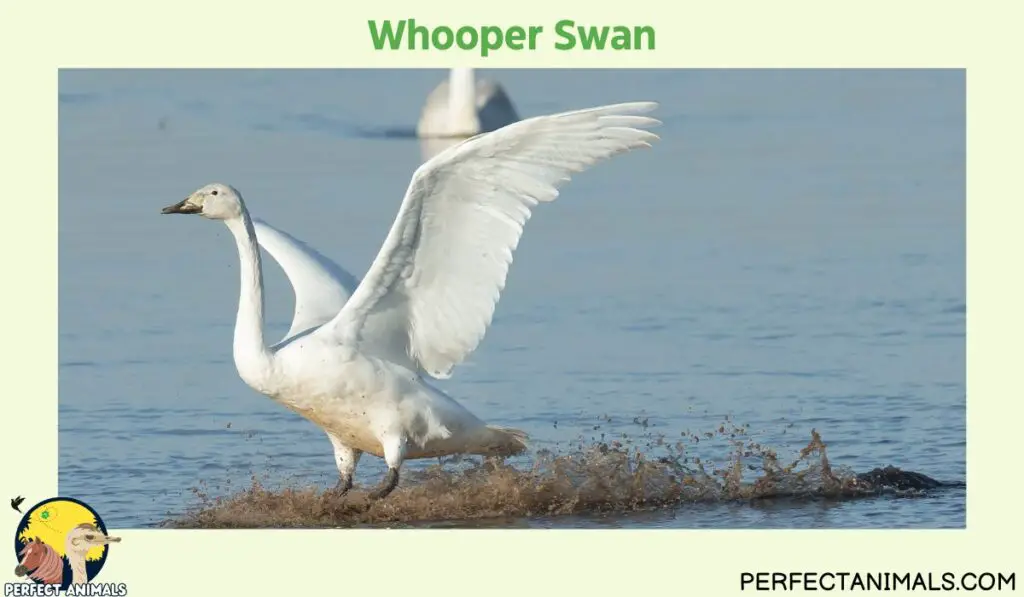
Whooper Swans leverage their extended necks to access food in deeper waters, giving them a distinct advantage over other waterfowl in their feeding habits.
The elegance of the Whooper Swan lies not only in its graceful appearance but also in the strategic advantage its long neck provides in diverse habitats.
Greater Flamingo
Greater Flamingos, with their sinuous and lengthy necks, claim the title of the longest necks among flamingo species.
Standing 120 to 150 cm tall and weighing 2 to 4 kg, these iconic birds exhibit a stunning pinkish-white plumage with distinctive long, curved necks.
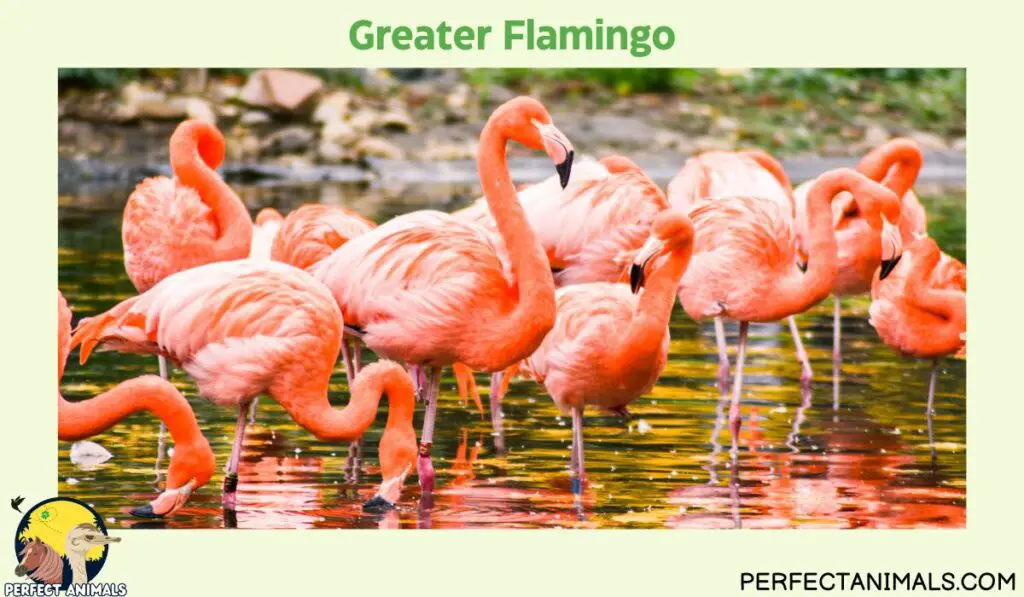
Inhabiting warm, watery regions across continents, including Africa, the Middle East, and Southern Europe, greater flamingos showcase the art of feeding in shallow waters.
Their bent bills, coupled with long necks and legs, allow them to efficiently filter small organisms from the water, emphasizing the evolution of a specialized feeding strategy.
The greater flamingo’s long neck is a testament to the beauty of adaptation, enabling these birds to thrive in diverse aquatic environments.
Jabiru
The Jabiru (Jabiru mycteria), a large stork gracing the wetlands of the Americas, stands out for its remarkably long neck.
With a length of up to 140 cm and a weight ranging from 2.3 to 8.4 kg, Jabirus exhibits a striking appearance with white plumage, black and red head and neck, and slightly upturned bills.

Thriving in wetland regions of Brazil, Paraguay, and beyond, these storks are exceptional hunters, feeding on amphibians, fish, mollusks, and even carrion.
The Jabiru’s long neck, held straight and extended during flight, showcases the evolutionary adaptation that aids in both hunting and navigating the diverse landscapes of South and Central America.
Scarlet Ibis
The Scarlet Ibis (Eudocimus ruber) adds a vibrant touch to wetland landscapes, featuring a medium-sized body with a long and slender neck.
Measuring between 56 and 61 cm in length, Scarlet Ibises boast a bright red plumage that contrasts with their long, slender necks.
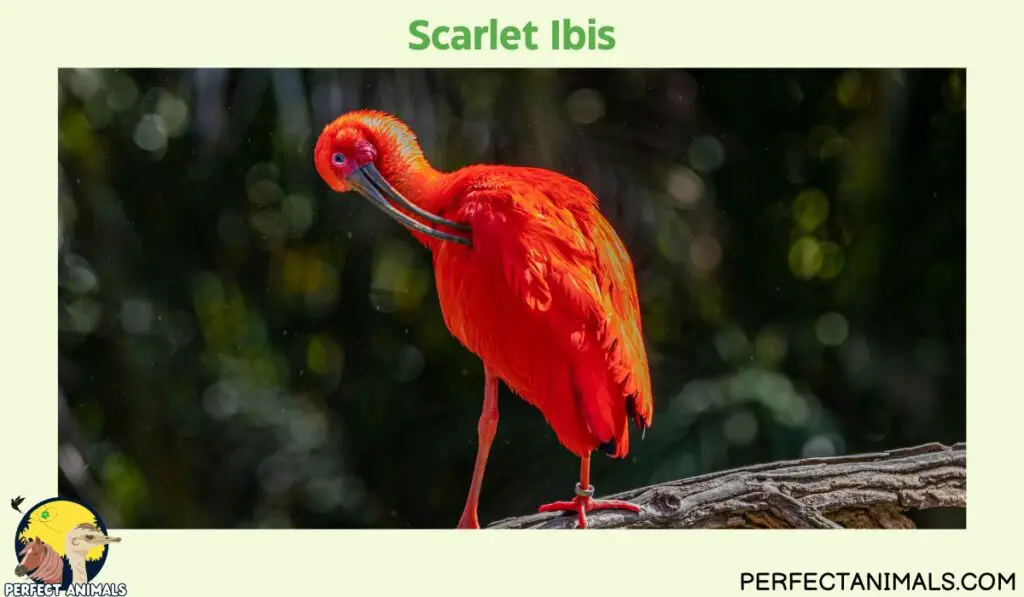
Their feeding habits involve probing mud and water with long, curved bills, reflecting an adaptation for reaching food in shallow waters.
The Scarlet Ibis’s long neck and bill, combined with long legs, create an elegant profile that enhances their foraging efficiency in marshes, lagoons, and shallow waters.
This species exemplifies the harmonious blend of vibrant aesthetics and functional adaptation in the avian world.
Emus
Emus, large flightless birds native to Australia, exhibit distinctive long legs and necks that contribute to their unique appearance.
Reaching up to 1.9 meters in height and weighing up to 60 kg, emus thrive in a variety of Australian habitats.
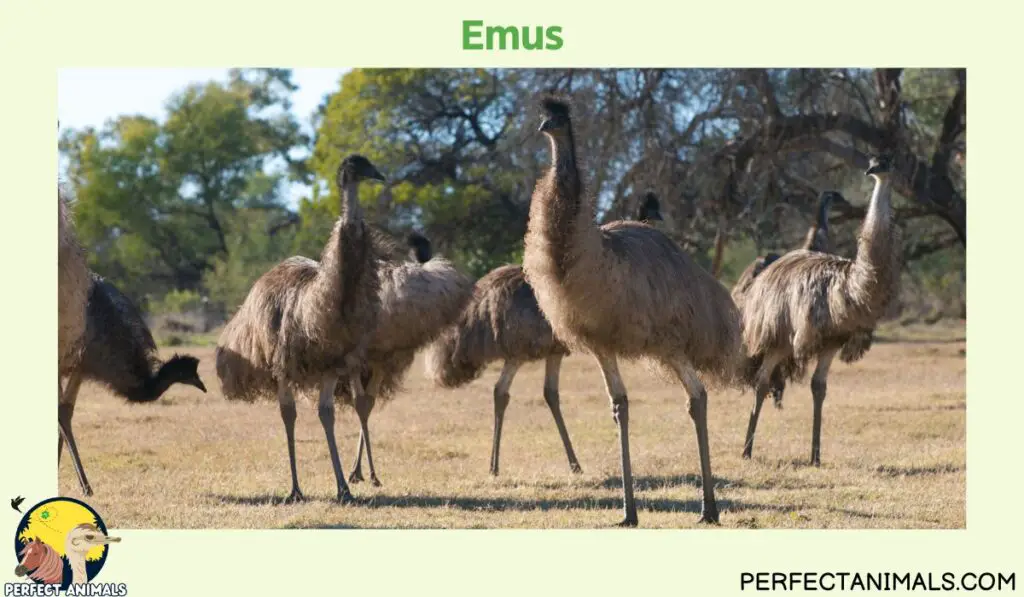
Their long, slender necks, held erect most of the time, provide them with a strategic advantage in spotting predators from afar and reaching food in shallow water or muddy flats.
Omnivorous in nature, emus showcase the versatility of their long necks in both foraging for plants and capturing small animals.
The emu’s long neck stands as a testament to the adaptability required to flourish in the diverse landscapes of the Australian continent.
Whooping Crane
Whooping Cranes (Grus americana), towering with long necks and legs, rank among North America’s largest birds.
These elegant cranes feature a white body, a red crown, and a long, dark, pointed bill.
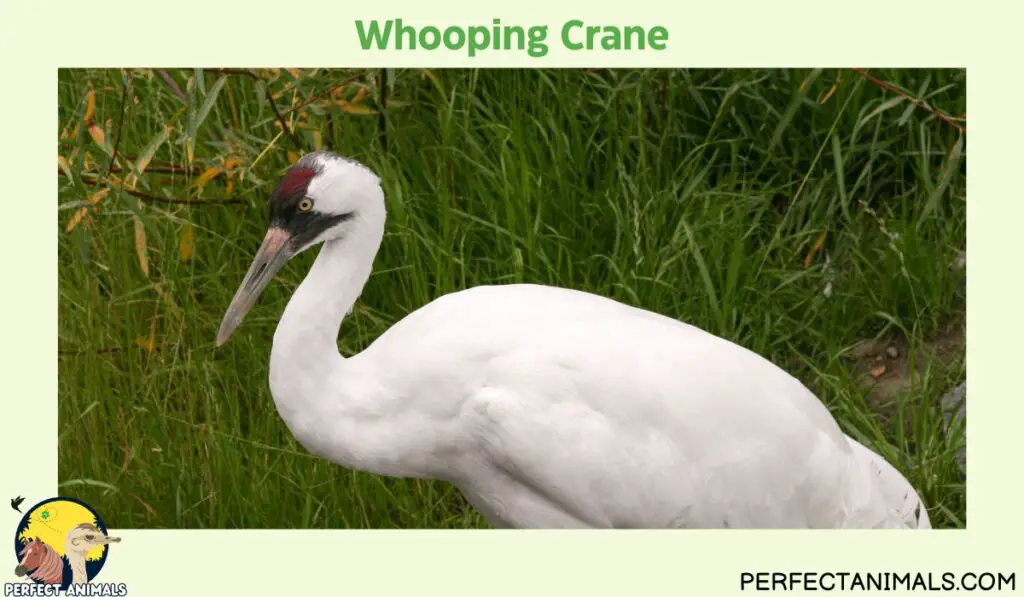
Found in wetland regions across North America, Whooping Cranes employ their extended necks to access food in shallow waters.
The graceful curvature of their long necks held straight in flight, enhances their majestic presence in marshes and near bodies of water.
The Whooping Crane’s long neck serves as an evolutionary adaptation for both feeding and navigating the vast wetlands of North America.
Great Egret
Great Egrets (Ardea alba) stand as iconic representatives of long-legged wading birds, showcasing their long, S-curved necks and dagger-like bills.
Measuring between 37.0-40.9 inches in length and weighing about 35.3 oz, these elegant birds adorn freshwater wetlands across the globe.
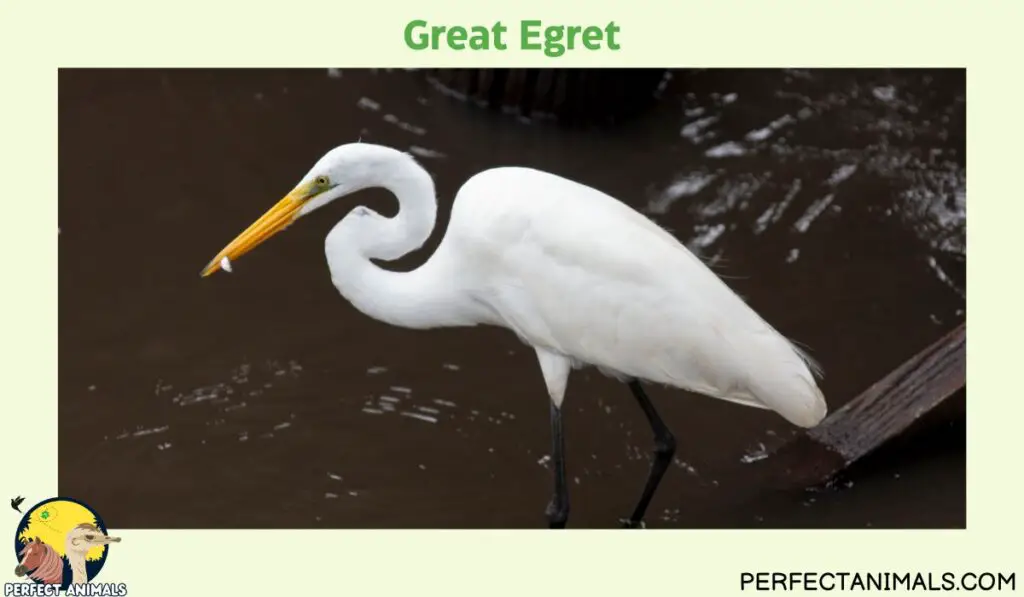
Their white plumage, combined with a distinctive long, yellow bill, creates a striking visual profile.
The S-curve in their neck, held elegantly during flight, contributes to both their aesthetic appeal and functional advantage.
Great Egrets employ their long necks as a tool for reaching food in shallow waters or muddy flats, reflecting the seamless blend of grace and efficiency in their foraging strategies.
Eastern Snake-necked Turtle
The eastern snake-necked turtle (Chelodina longicollis) is aptly named for its remarkably long neck, which can exceed the length of its shell.
Their necks may reach up to 60% of their carapace length. This gives them great flexibility to strike rapidly at fish and aquatic invertebrates.
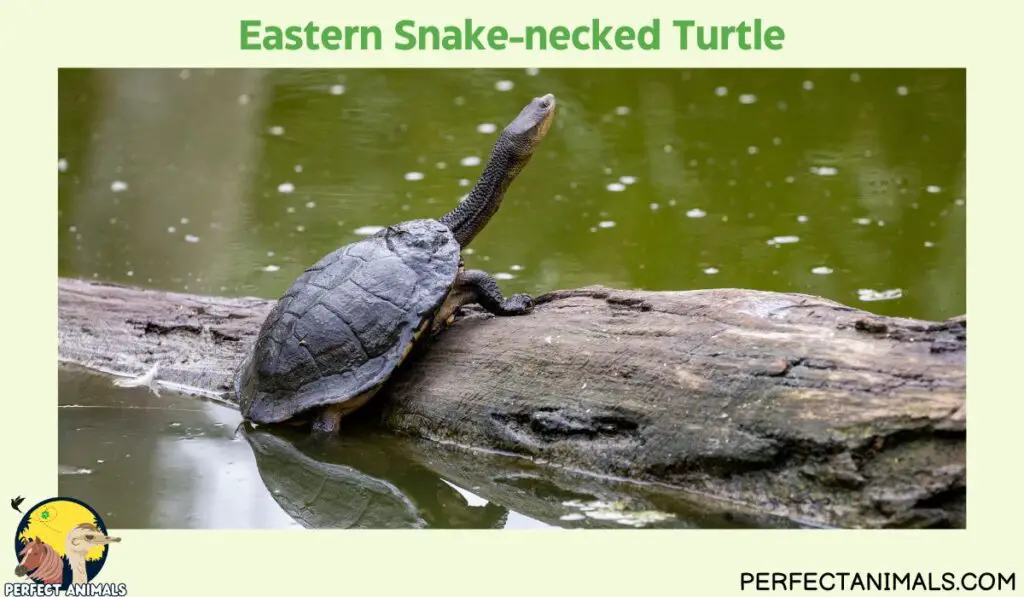
Eastern snake-necked turtles spend much time submerged, using their elongated necks to breathe at the surface while their bodies remain hidden below.
The length of their necks provides an advantage in their aquatic habitat by reducing visibility to predators above water.
Their long necks also allow extensive movement to scan surroundings.
Related Article – Pink Belly Sideneck Turtle
Komodo Dragon
The Komodo dragon (Varanus komodoensis) possesses a thickset, muscular neck reaching up to 9 inches (25 cm) long in large adults.
Komodo dragons utilize their sturdy elongated necks to swiftly grab fleeing prey with their massive jaws.
They can extend their necks rapidly when ambushing targets.
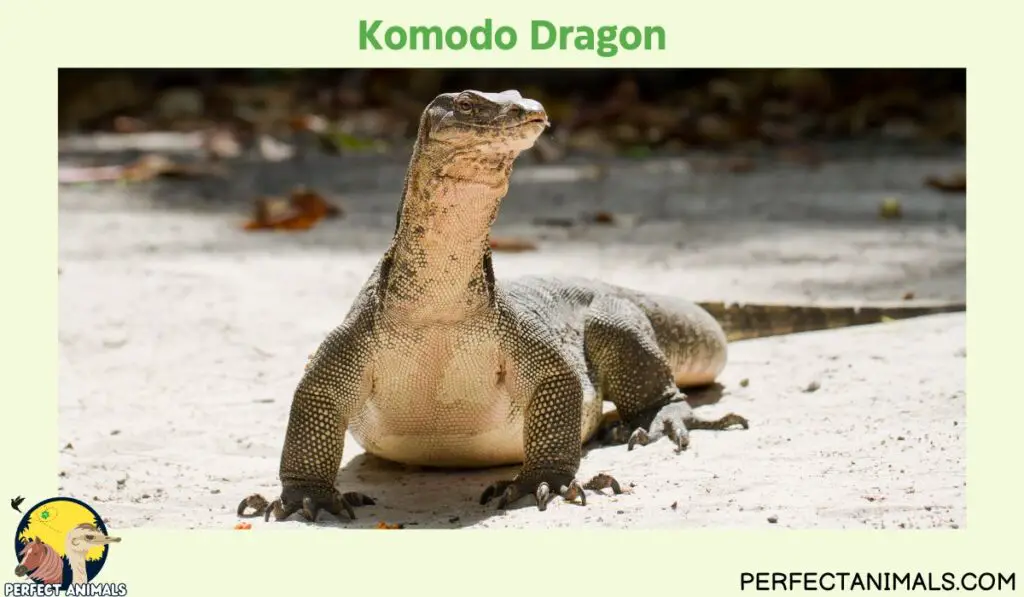
Komodo dragons also employ their flexible necks to swallow large chunks of meat.
Males wrestle opponents with their necks in mating competitions.
Their durable necks provide crucial leverage to subdue large prey with their tremendously powerful bites.
The Komodo’s neck strength matches its tremendous size and bite force.
You May Also Like – Bearded Dragon Shedding
Final Thoughts
Animals exhibit amazing diversity in the length and flexibility of their necks, which serve crucial functions from feeding to fighting.
As we’ve seen, elongated necks provide many key evolutionary advantages that aid survival for the animals that possess them.
From the towering legs and neck of the ostrich to the snake-like stealth of the anhinga, the length of the neck allows specialized access to food other animals cannot reach.
Longer-necked animals can also keep a lookout for predators or competitors over a greater range, spotting danger sooner.
Lengthy necks require specialized vertebrae and blood vessels to supply the head at such high elevations.
Many long-necked species have innovative anatomical adaptations to balance the stresses of their extraordinary proportions.
While being long-necked comes with trade-offs like increased visibility and difficulty drinking, the benefits of access to more resources drive the evolution of neck elongation in so many different lineages of birds, mammals, and reptiles across diverse habitats.
The world’s animals with elongated necks continue to inspire awe and fascination through the many ways they utilize their unique proportions with such grace and skill.
Resources – (for further reading)
Britannica – Giraffe | Facts, Information, Habitat, Species, & Lifespan
Britannica – Dromedary | Definition, Characteristics, & Facts
National Geographic – Llama
National Geographic Kids – Flamingo
Wikipedia – Common ostrich

Sarah has years of experience working as a zookeeper. She has cared for a wide variety of animals, from primates to big cats. Her passion for animals extends beyond her profession, as she dedicates her free time to writing about wildlife and their conservation.
